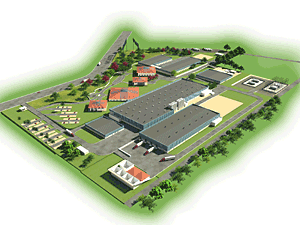 Tetra Pak, Switzerland, this past week broke ground on a state-of-the-art packaging material factory in Chakan, India, near Pune. The EUR 100 million (INR 600 crores) plant is designed to meet growing demand for carton packaged dairy beverages and fruit-based drinks in India, South and Southeast Asia, and the Middle East.
Tetra Pak, Switzerland, this past week broke ground on a state-of-the-art packaging material factory in Chakan, India, near Pune. The EUR 100 million (INR 600 crores) plant is designed to meet growing demand for carton packaged dairy beverages and fruit-based drinks in India, South and Southeast Asia, and the Middle East.
The new plant will have an initial annual production capacity of 8.5 billion packages, with the potential of increasing to 16 billion packages. It will produce packaging material for such packages as Tetra Brik Aseptic, Tetra Fino Aseptic, and Tetra Classic Aseptic. The Indian commitment follows similar recent investments by the company to increase production capacity in China, Pakistan, Russia, and Brazil.
Driven by economic growth, a rising middle class and increasing demand for the convenience of packaged drinks, the market for carton packaged dairy beverages and fruit-based drinks is expected to grow from 757 million liters in 2010 to 1.3 billion liters by 2013 in India, Bangladesh, and Sri Lanka, Tetra Pak notes. The same trend, it adds, is taking place in South and Southeast Asia, where this market is expected to rise from 3.6 to 5.4 billion liters during this period. In the Middle East, it is expected to increase from 8.3 to 10.6 billion liters.
"We are committed to supporting our customers to meet growing consumer demand in these regions and all over the world," said Alejandro Anavi, EVP, Supply Chain Operations. He explained that "in addition to the convenience of packed dairy beverages and fruit-based drinks, more people are becoming aware of the nutritional benefits of aseptically processed and packaged milk."
To date Tetra Pak has invested approximately EUR 24 million in the existing Pune plant, which has been in operation for nearly 14 years and is reaching its full capacity. "With strong economic growth, a dynamic consumer base, and modernization of distribution and retailing, there is a high demand across all categories," said Kandarp Singh, managing director, Tetra Pak India.
Among its facilities the new packaging plant will have a machine rebuilding center providing technical services such as startup support and machine renovation to customers. It also will have a product development and innovation center that will have a laboratory, a pilot processing plant, and a pilot packaging plant to meet the product formulations and development needs of customers.
The new plant will also tout several environmentally efficient features such as the use of renewable and non-conventional energy and materials, heat recovery to generate air conditioning, and rain water harvesting.
TAPPI
http://www.tappi.org/